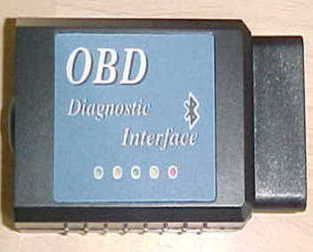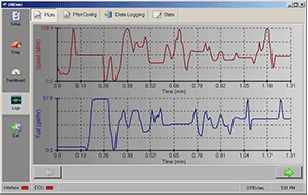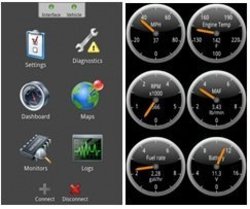
I read a lot about the torque android car scanner program available for tablets and phones. I own several hand-held scan tools, but thought it would be fun to use a Nexus 7 to fix some cars.I convinced my wife the purchase of a Google Nexus seven tablet along with the Torque android app and a BAFX products Bluetooth OBD II adapter was a necessary purchase. This way we could continue to diagnose car problems and pay the bills. It was hard to argue with my logic.
To review some costs, I got a Google Nexus seven for $200. I went to the android apps store and got the torque Pro app for $4.95. I grabbed the BAFX products Bluetooth Elm 327 scanner for 23.95 on Amazon bringing my total investment to $230. Just a couple of years ago setting up one of these devices to scan automobiles wasn’t easy.
With the advancements in the Bluetooth adapters and the android operating system, coupled with improvements to the torque pro diagnostic program, it was a breeze to set up. You can find videos that walk you through the steps to get it working, but I wouldn’t bother. When you plug in the OBD 2 adapter and start the Torque app it connects and turns on the tablets Bluetooth automatically.
You could be diagnosing check engine lights with a tablet or phone in a few minutes. I opted for the BAFX products adapter because of the positive reviews it’s received on Amazon. You can get cheaper ones, but I would be careful about paying less than $20 for a Bluetooth OBD adapter. After reading some reviews a lot of the $15 pieces of plastic are just that. A piece of plastic that wouldn’t connect to a vehicle. Another thing I would stress is, there is a free version of the torque android program. Spend the extra 5 bucks and get the Pro version. It’s easier to connect and set up plus there are more options and plug ins available on the diagnosis side that can help fix complex check engine light problems.
Using Android Auto Scan Tools

The first car I fixed set a check engine light code P0171. This is an oxygen sensor Bank one detected lean code. I was able to quickly connect to the vehicle and I shot a video of this that I will make available on YouTube. My channel is at MGittelman. I have about 15 auto repair videos posted. Now back to the story on the torque application.
I ran a test on the oxygen sensors, the buttons are clearly marked. Bank one sensor one was highlighted in red to show a problem. I went to the graphing data function and selected that sensor from the drop down menu. I started the vehicle and let it run to start logging data for the problem sensor. The 02 cross counts never went below 500 mV. Showing in 02 cross count of zero and this is why the code set.
Here comes the meat and potatoes of this short story. The car did not have a bad O2 sensor. It had a vacuum leak that was causing the lean condition on bank one.
I was able to diagnose this by going into the real-time data tracker and selecting fuel trim from the drop down menus. I noticed the fuel trim was pegged and not varying. This meant the computer was trying to compensate by going full rich, because the exhaust stream was to lean.In the end there was a broken vacuum line adding air the computer did not measure. I fixed the hard plastic line with a rubber junction and went for a ride. The check engine light didn’t reset. I pulled the oxygen sensors out, because sometimes they get damaged by the high heat generated from a lean running condition. A very lean air fuel mixture can raise exhaust temperatures enough to melt an o2 sensor. In this case we apparently caught it soon enough and no replacement was needed.
Expensive Bluetooth Adapters also Work

After doing some research on the different kinds of OBD Bluetooth adapters I found this MX OBD scan Link model 426101 Interface for $100. I was interested, because it was so expensive compared to the others. I decided to check it out to see why.
The claim is this thing is compatible with more cars and software than other OBD interfaces on the market. It’s secured in some way in case you want to leave it connected all the time. You can’t do that with other devices because whenever you plug in one of these things it lights up to show an active connection! This can drain the battery.
The MX has what they call drain saver technology, so you can leave it plugged in without danger of draining the battery. The other advantage is the physical size compared to the one I bought. The MX is very compact and the included software and firmware is upgradeable. You don’t have to use the Torque app, but you can if you want.
It comes with it’s own app and the premium OBD 2 Wiz Program. To me this is a big deal. Who knows what the future will bring as far as on-board diagnostic protocols? The Bluetooth adapter I have isn’t upgradable in any way. The last big difference between this expensive model and the cheap one is, what you can connect to it.
The BAFX product is mainly designed and built to be used as an android car scanner working with the torque app. The MX comes with a full software package and can be used on a laptop or PC as well as any android device from version 2.12 – lollipop 5.0.1.
However, I don’t think it does MAC. It’s nice having it connected all the time and jumping on a PC in the warm house to review diagnostics in comfort. The device I bought has a limited range. You need to be close to perform testing operations.
If you need support on the android app visit the torque pro forum. I have a lot of pages about fixing check engine lights on the You fix cars.com website. Head back to my check engine light section to read more in-depth articles about specific common problems. Why not find out more and see if you can fix it yourself?

